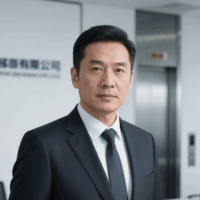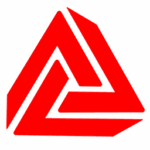Direct Cost Comparison
1. Equipment Price Differences
- China’s Advantage: Large-scale production and mature supply chains make Chinese elevators significantly cheaper than EU counterparts. For a 1000kg passenger elevator, domestic brands cost ~150,000–200,000 RMB, while EU products (e.g., ThyssenKrupp) range ~300,000–400,000 EUR, a 2–3x difference.
- Core Variations: EU elevators use high-spec materials (e.g., 316L stainless steel rails), precision craftsmanship (straightness ≤0.2mm/m), and advanced drive systems, increasing costs. For example, EU rail material costs are 2x higher, adding ~50,000 RMB per unit.
2. Installation Cost Comparison
- Labor Costs: EU installers earn ~300–500 EUR/day, while Chinese workers earn ~200–300 RMB/day, a 5–8x gap.
- Additional Costs: EU installations require EN 81-20 compliance, involving safety supervision and debugging fees (~10–15% of total cost). Chinese installations cost ~10–12% of equipment price with simplified processes.
Indirect Cost Differences
1. Certification & Compliance Costs
- EU CE Certification: Requires notified body review (3–6 months, ~50,000–100,000 EUR), including risk assessments and on-site testing.
- China GB Certification: Simplified process (1–3 months, ~10,000–30,000 RMB). GB/T 7588 aligns with ISO 8100 but has stricter safety requirements (e.g., brakes).
2. Logistics & Tariff Costs
- Transportation: China-EU rail shipping costs ~4,000–6,000 USD/20ft container, vs. 2,000–3,000 USD via sea. Local EU procurement saves 30–50%.
- Tariff Barriers: EU imposes 8% MFN tariffs on Chinese elevators, rising to 20–60% under anti-dumping measures. For example, EU tariffs on Chinese construction lifts reached 66.7%.
Market Environment & Policy Impact
1. Supply Chain Structure
- China: Integrated supply chains (e.g., Yangtze River Delta clusters) reduce component costs. Modular design shortens production cycles by 30%.
- EU: Fragmented supply chains rely on imported components, increasing exchange rate and transport risks.
2. Policy Guidance
- China: Subsidizes green elevators (e.g., 300 RMB/unit) and offers tax incentives, lowering procurement costs.
- EU: ErP Directive mandates A-level energy efficiency, requiring upgrades (e.g., permanent magnet motors), but eligible for green loans.
Cost Optimization Strategies
1. Supply Chain Management
- Localized Production: Chinese firms can set up EU assembly plants (e.g., Xizi Elevator in Hungary) to avoid tariffs and reduce lead times.
- Modular Procurement: Standardized components (e.g., doors, rails) lower inventory costs while meeting dual certification requirements.
2. Compliance & Certification
- Dual Certification: Apply for CE and GB simultaneously using dual-accredited agencies (e.g., SGS) to reduce retesting fees.
- Policy Utilization: Chinese firms can leverage Belt and Road subsidies; EU buyers can claim ErP-related tax breaks.
3. Technological Upgrades
- Energy-Saving Tech: Energy recovery systems (e.g., permanent magnet motors) cut energy use by 30%, reducing long-term costs.
- Smart Monitoring: IoT sensors enable predictive maintenance, extending equipment lifespan.
Industry Case Studies
1. Chinese Developer’s European Project
- Needs: Procure 6x 800kg elevators for a Paris apartment.
- Solution: Compared local procurement (240,000 EUR) vs. Chinese exports (120,000 RMB + 6,000 USD freight + 9,600 EUR tariffs). Export option saved 40% but required 50,000 EUR CE fees and 2-month delay.
2. EU Hotel Renovation Project
- Needs: Upgrade 5x elevators to energy-efficient models.
- Solution: EU brand (350,000 EUR) vs. Chinese imports (200,000 RMB + 30,000 EUR certification + 50,000 EUR installation). Import option saved 30% and qualified for 40,000 EUR EU subsidies.
FAQs
1. What causes price differences between China and EU elevators?
Material costs, craftsmanship standards, and supply chain structures. EU elevators are pricier due to high-spec materials and precision manufacturing.
2. How to balance certification costs with budgets?
- Use dual-accredited agencies to avoid retesting.
- Leverage government subsidies (e.g., China’s green elevator incentives).
3. Does logistics affect China-EU procurement decisions?
Yes. Chinese exports incur transportation and tariffs, while EU local procurement saves 30–50% on logistics.
Conclusion
China-EU elevator procurement cost differences stem from technical standards, supply chains, and policies. China excels in pricing and supply chain efficiency, while the EU prioritizes safety and long-term costs. Businesses should optimize through localized production, modular procurement, and policy utilization.




